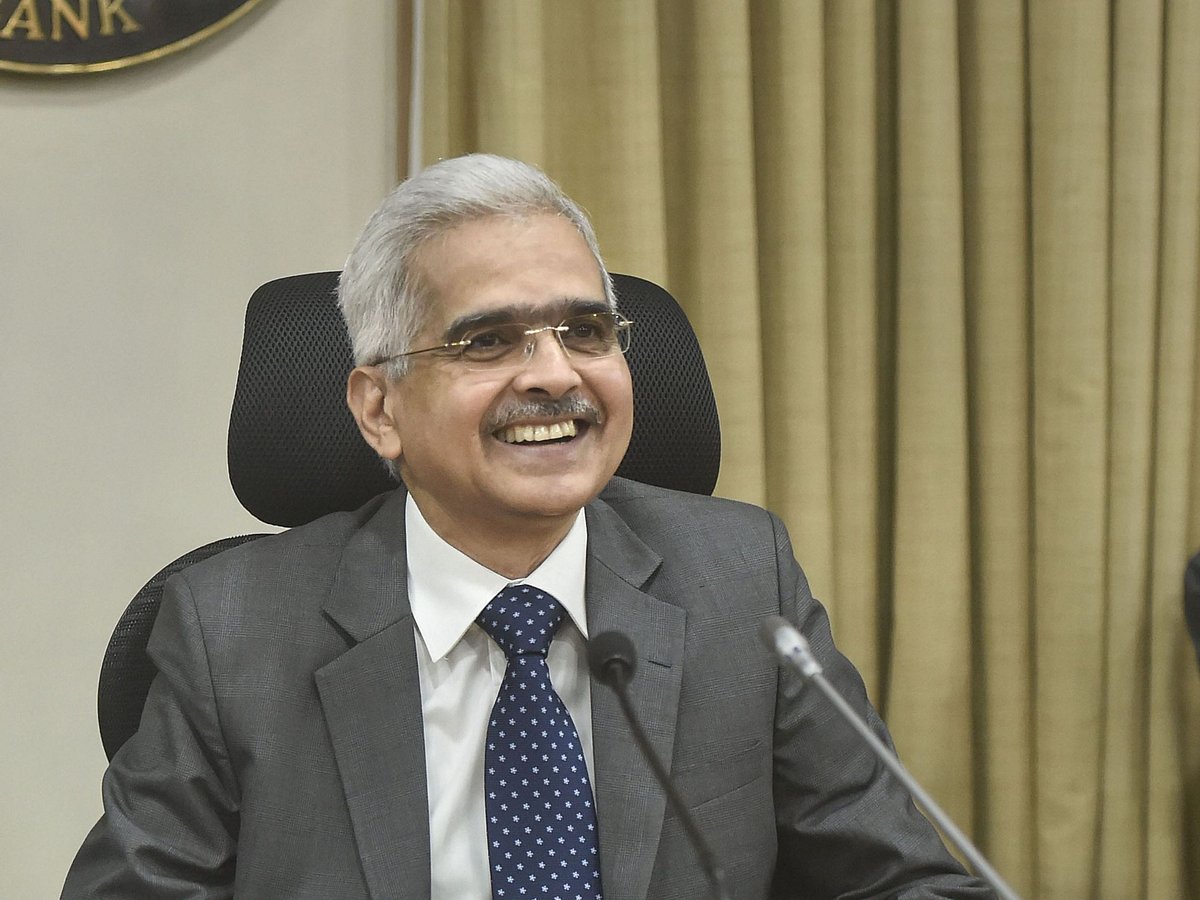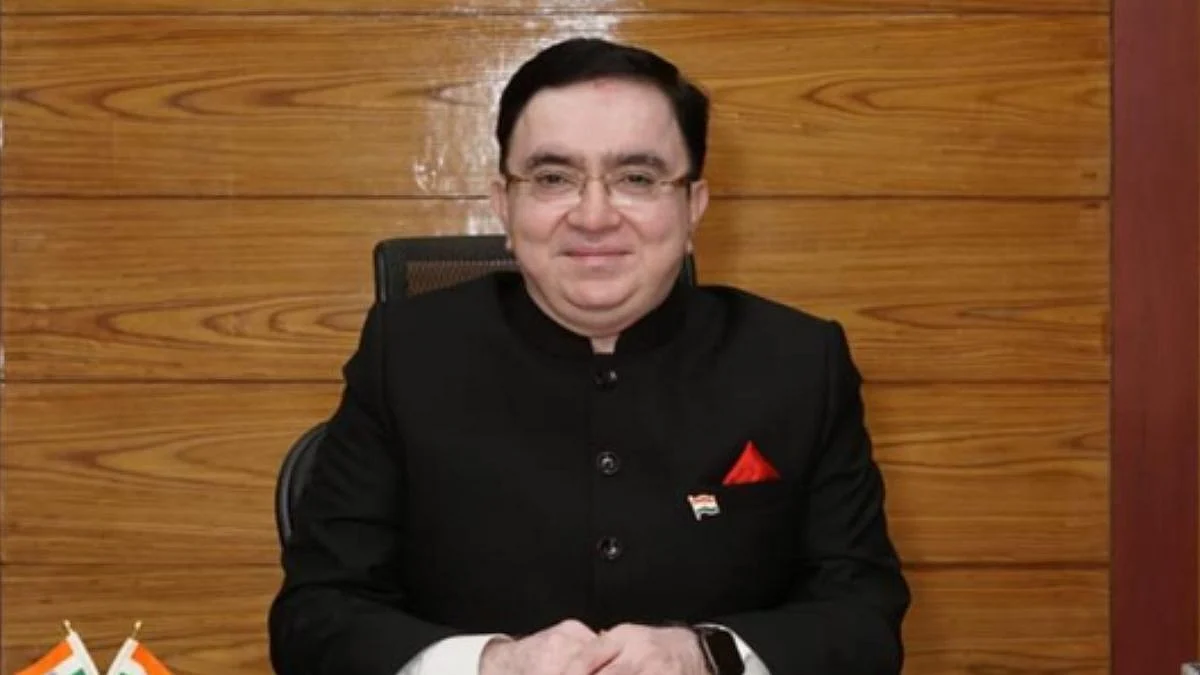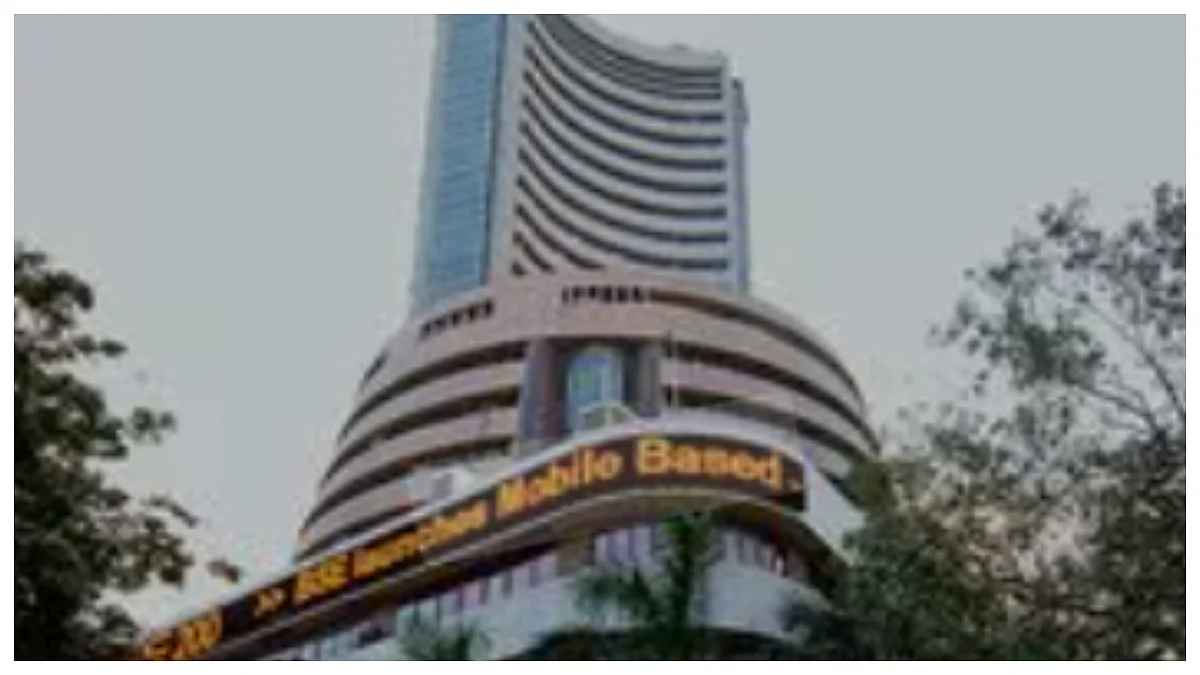The markets are buoyant as the RBI has retained repo rates and kept stance unchanged. The Governor has assured the markets of ample liquidity while announcing higher VRRRs to absorb the excessive systemic liquidity, and this announcement has enthused the markets.
The announcements made in Reserve Bank’s policy were consistent to the needs of the current situation. The optimism of policymakers about a steady economic recovery would only cushion the market sentiments to move up the growth graph, market participants said
Reactions from economists and others
Suvodeep Rakshit, Senior Economist, Kotak Institutional Equities
The RBI policy, as expected, remained cautious and in a wait-and-watch mode. Even as it increased the quantum under the 14-day VRRR auctions and opened the option of 28-day VRRR auctions, it adequately sounded out on its dovishness and the need to ensure liquidity conditions remain comfortable. We do not see the RBI in a hurry to normalize liquidity conditions as well as the reverse repo rate in the near term. We continue to see the February policy as the earliest period of review for the RBI to narrow the policy rate corridor by raising the reverse repo rate.
S. S. Mallikarjuna Rao, MD and CEO, Punjab National Bank
The growth projections has been retained and the CPI inflation projections has been moderated. As expected there is no change in policy rates. The gradual and calibrated unwinding of liquidity measures will support growth while keeping inflation under control.
Announcement of a framework of retail digital payment in offline mode across the country, increasing per transaction limit of IMPS from Rs 2 to Rs 5 lakh and geo-tagging of physical payment acceptance infrastructure, will support financial inclusion and is another step in a journey towards creating a digital financial infrastructure.
Bank lending to NBFCs for priority on-lending extended for 6-months upto March 31, 2022 will encourage flow of credit and support growth at the grassroots level.
Indranil Pan, Chief Economist - Yes Bank
The RBI was clear about the fact that it would be careful of not rocking the boat in any way. Even the stance of the policy remained accommodative with no change in the language. This means that RBI vows to stay accommodative for as long as necessary to revive and sustain growth on a durable basis. The comfort to the RBI is possibly derived from the evolution of the inflation trajectory, that appears to be much better than its own anticipation. This also led RBI to bring down the year’s Headline CPI average estimate down by 40bps from 5.7 percent previously. With growth conditions expected to be getting relatively better, RBI is trying to formulate a path to come out of the extraordinary accommodation during COVID-19.
The RBI has kept the room open for a reverse rate repo increase in the upcoming December policy. No changes are envisaged to the Repo rate in the current fiscal and can only be addressed in FY 2022-23 after a thorough understanding of the evolving growth-inflation mix.
Nilesh Shah, Group President & MD, Kotak Mahindra Asset Management Company
RBI policy is a " Mai Ho Naa" policy aimed to achieve multiple objectives. Keep Growth Supported, Inflationary expectations under check, Financial Markets stable, Liquidity adequate and appropriate, Yield Curve in shape and ensure smooth passage of Govt s borrowing Program. They have reassured the markets that monetarily policy normalization will be gradual and calibrated.
Anagha Deodhar, Chief Economist, ICICI Securities
The rate decision as well as the voting pattern in today’s monetary policy review was along expected lines. The MPC lowered inflation forecast for FY22 to 5.3 percent (from 5.7 percent in the August review), mainly due to lower expected inflation prints in Q2 and Q3. While it retained growth forecast for FY22 at 9.5 percent, it added that the external environment is turning more uncertain and challenging. On the regulatory front, the RBI extended SLTRO for small finance banks till Dec 2021, decided to continue with extended WMA limit till March 2022, and extended inclusion of on-lending to NBFCs in priority sector till March 2022.
Deepak Jasani, Head of Retail Research, HDFC Securities
The MPC meet outcome was largely on expected lines, though sounding a bit dovish. The RBI seems to be following the other central banks by first trying to reduce liquidity (by abandoning GSAPs and announcing VRRR calendar). It also cut inflation projection for FY22 by more than the street expectations to 5.3 percent. Though it has not hinted at hike in rates, reverse repo rates could be hiked in December meet, signaling the start of policy normalization. The equity markets are relieved temporarily by the dovish tone but will be aware of the rate hike possibilities going ahead.
Santosh Meena, Head of Research, Swastika Investmart Ltd
The credit policy is neutral to positive for the market as the market was already expecting that interest will remain unchanged, but the market is cheering on fact that there is no change in stance. Ending GSAP is a little negative surprise, but the governor said he is ready to resume GSAP if there will be a requirement.
The governor is confident about growth and didn't show much worry about inflation and therefore the market is witnessing a bullish momentum post policy. I believe this event will have a few hours effect on the market however market will focus on global cues. We are outperforming despite a rise in US bond yields, the dollar index, and Crude oil prices.
Anand Nevatia, Fund Manager, TRUST Mutual Fund
A 5-1 vote on stance clearly reflects that majority of MPC still comfortable and convinced with accommodative stance. A “favourable than anticipated” inflation trajectory and downward revision of CPI at 5.30 percent has allayed any fears of near term rate hikes. The Governor has assured the markets of ample liquidity while announcing higher VRRRs to absorb the excessive systemic liquidity. Absence of GSAP has impacted markets negatively specially at the longer end of the curve. The CPI readings will be low for next couple of months. Inflationary expectations could lead to underperformance of longer maturity bonds. Easy liquidity will support performance of funds up to maturity of 3 years.
Tirthankar Datta, Partner, JSA
As expected by market participants, the RBI has retained the accommodative stance by not increasing the repo rate. While the RBI acknowledged the liquidity overhang, it also allayed fears that the liquidity measures will remain to support growth by extending the On Tap Special Long Term Repo Operations (SLTRO) for Small Finance Banks till December 31, 2021.
On a separate note, the RBI also further elaborated on the impetus towards certain payment system measures announced earlier including introduction of retail digital payment solutions in offline mode and also some new technology driven payment acceptance infrastructure for retail payments involving geo tagging . It was also announced that given the increased reach of NBFCs, an ombudsman for NBFCs will be implemented for strengthening grievance redressal.
Vikash Khandelwal, CEO, Eqaro Guarantees
The central bank kept the key rates and policy stance unchanged for the 8th time in a row thus allaying concerns around a possible unwinding or availability of adequate liquidity. The overall recovery especially in the services and the technology-driven sectors coupled with inflation being well within RBI’s comfort levels helped the central bank stay with the current excess levels of system liquidity. This should help boost economic growth, credit offtake and is a big sentiment booster for the bond market. The ombudsman for NBFCs will help strengthen the grievance redressal mechanism and lead to a speedy resolution.
Churchil Bhatt, EVP Debt Investments, Kotak Mahindra Life Insurance Company
The MPC decided to persist with its accommodative policy stance and opted for a “resolute pause” in Policy Rates to provide support to “durable growth” with a firm footing. While the MPC retained its FY2022 GDP growth forecast at 9.5 oercent, it revised its FY2022 projection lower by 40 bps to 5.3 percent on the back of lower food inflation. The MPC acknowledged that crude oil and other commodity prices remain a threat to the inflation trajectory, but weak demand should limit the pass-through to output prices. Importantly, on the action front, the RBI signaled the beginning of gradual “Tapering” of liquidity by extending VRR auction tenor, a measure widely expected by markets. While the RBI has refrained from committing any GSAP amount to support bond yields, their emphasis on an “orderly evolution of yield curve” should provide comfort to Bond Markets. We expect 10Y Gsec to trade in 6.20 percent-6.40 percent range in the near term.
R Sridhar, Executive Vice Chairman, CEO, Indostar Capital Finance
The MPC’s decision to keep interest rates unchanged is once again an indication that interest rates will continue to remain low and are unlikely to go up in the short-term.
The current decision will certainly bode well for all interest-sensitive sectors, like Commercial Vehicle financing and affordable housing, among others. A lower interest regime may potentially result in an uptick in demand in the run-up to the festive season, especially as the pandemic retreats and markets witness some forms of revenge buying especially for CV and affordable housing.
Anand Nevatia, Fund Manager-TRUST Mutual Fund
A 5-1 vote on stance clearly reflects that majority of MPC still comfortable and convinced with an accommodative stance. A “favourable than anticipated” inflation trajectory and downward revision of CPI at 5.30% has allayed any fears of near term rate hikes. The Governor has assured the markets of ample liquidity while announcing higher VRRRs to absorb the excessive systemic liquidity. Absence of GSAP has impacted markets negatively specially at the longer end of the curve. The CPI readings will be low for the next couple of months. Inflationary expectations could lead to underperformance of longer maturity bonds. Easy liquidity will support performance of funds up to maturity of 3 years.
Rajesh Sharma, Managing Director, Capri Global Capital Ltd
Today’s announcement would accelerate the market momentum, however, to achieve timely growth, the policymakers may accommodate more monetary-fiscal policy combinations to strengthen the sectors most affected by the Pandemic. Permitting Banks to On-lend through NBFCs focusing on priority sector would give an impetus to scale up their business without worrying about financial destitution. Moreover, the introduction of the Internal Ombudsman Scheme (IOS) for certain categories of NBFCs that have higher customer interface is a much-needed step as it will reduce the hassle for customers in choosing the right ombudsman.
Vijay Kalantri, Chairman, MVIRDC World Trade Center Mumbai
As expected the RBI maintained its accommodative stance and retained the policy rates to support the nascent economic recovery. We expect the central bank to maintain this accomodative stance until economic growth gains traction, especially in tourism, hospitality and other contact-intensive service sectors that contribute 20 percent to the GDP.
What is noteworthy in this policy is that the RBI has taken a slew of measures to support the fintech ecosystem, by promoting digital payments even among consumers who don’t have internet connectivity and focusing on greater geographical reach of digital payments infrastructure. We welcome the extension of the deadline for liquidity window given to small finance banks and the priority sector status given for on-lending to NBFCs. Both these measures will support credit growth to MSME sectors.
Rajiv Agarwal, Managing Director – Essar Ports Ltd
RBI continues its focus on the revival of the country’s economy by adding sufficient liquidity to ensure stability in the current pandemic scenario. The decision to keep the rates steady with repo rate and reverse repo rate unchanged was expected and much-needed in the current scenario to aid the recovery of the economy. We are definitely witnessing a pick-up in the economic activity which is gaining momentum and the coming festive season will surely boost consumption even further.
Deepak Sood, Secretary General, ASSOCHAM
ASSOCHAM has been voicing a stand similar stand to what is mentioned in the RBI policy statement with regard to the need for 'calibrated reversal' of indirect taxes on fuel. We have been consistently pressing for including petroleum products into the GST network for lowering the cost push inflationary pressures.
On growth prospects, RBI's assessment is largely on course and the GDP growth for the FY'22 might even reach the double digit, given the unfolding of pent-up demand, as is being witnessed.
We welcome several other measures including offline digital payment in the hinterland, extension of on lending to the priority sector by NBFCs and support to the small finance banks for helping MSMEs. Raising the transaction limit on the Immediate Payment Service (IMPS) from Rs. 2 lakhs to Rs 5 lakh would give a boost to digital banking and help small businesses in operational efficiencies. Digitisation would also get an impetus from the proposed framework on geo-tagging for Payment Approval infrastructure.
Naveen Kulkarni, Chief Investment Officer, Axis Securities
RBI continues to be supportive of driving growth in the economy through benign interest rates, keeping liquidity conditions comfortable for all stakeholders. Unchanged policy rates and an accommodative stance keep up the optimism of market participants. Lower inflation projections from 5.7 percent to 5.3 percent for FY22 would be a positive factor, signaling to harden interest rates unlikely in the near term. GDP growth remained at 9.5 percent, with upward revisions in Q2/Q3 FY22 hint at gradual recovery, as the aggregate demand is yet to pick up meaningfully. The halting of GSAP operations is an early sign of normalization, but readiness towards OMOs will keep liquidity conditions sanguine. We believe the backdrop of low-interest rates amidst the festive season will push consumption in housing and its ancillary sectors.










